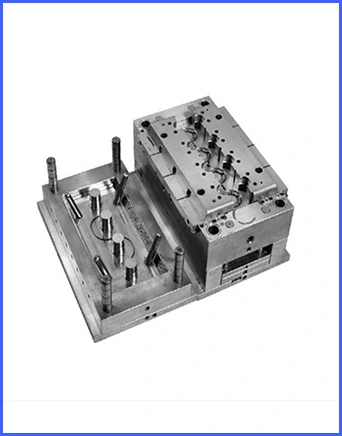Time to read: 6 min

Injection molding is a versatile process renowned for its cost-effectiveness in mass production, yet it involves a variety of cost factors that require careful consideration. Understanding these factors is essential for optimizing the financial efficiency of injection molding projects.
Is Injection Molding Expensive?
The cost-effectiveness of injection molding depends on production volume. While initial setup costs can be high, the per-part cost decreases with increased production, making it an economical choice for large-scale manufacturing.
Key Factors Influencing Injection Molding Cost
- Part Costs: Size, complexity, and design for manufacturability (DFM) influence material and production costs.
- Tooling Costs: Mold manufacturing processes, mold materials, mold complexity, and mold cavity size affect the upfront investment.
- Material Costs: The choice of plastic material and the optimization of material usage impact the base cost of parts.
- Production Volume: Low, medium, and high-volume production affect the equipment, molds, and labor required.
- Equipment Costs: The type and size of injection molding machines and their level of automation influence the cost.
- Labor Costs: Setup, repair, and operator costs are part of the labor expenses.
- Surface Finishing: Additional processes like annealing or powder coating increase part aesthetics or functionality.
- Part Packaging: The type of packaging required affects the cost.
- Part Inspection Requirements: Standard or specialized inspection methods have different cost implications.
Best Practices to Reduce Injection Molding Costs
- Simplify Tooling Design: Streamlined molds reduce cycle times and material waste.
- Reduce Unnecessary Part Features: Eliminating non-essential features lowers manufacturing costs.
- Optimize Material Selection: Choosing cost-effective materials that meet functional requirements.
- Eliminate Cosmetic Appearance: Prioritizing functionality over aesthetics for parts where appearance is non-critical.
- Reuse Molds: Extending mold lifespan through regular maintenance and careful handling.
- Choose Insert Molding: Integrating multiple parts into a single molding process reduces assembly steps and costs.
Conclusion
A thorough understanding of injection molding costs allows manufacturers to optimize the manufacturing process. By considering part design, material selection, production volume, and other factors, businesses can achieve cost-effective production while maintaining quality.




